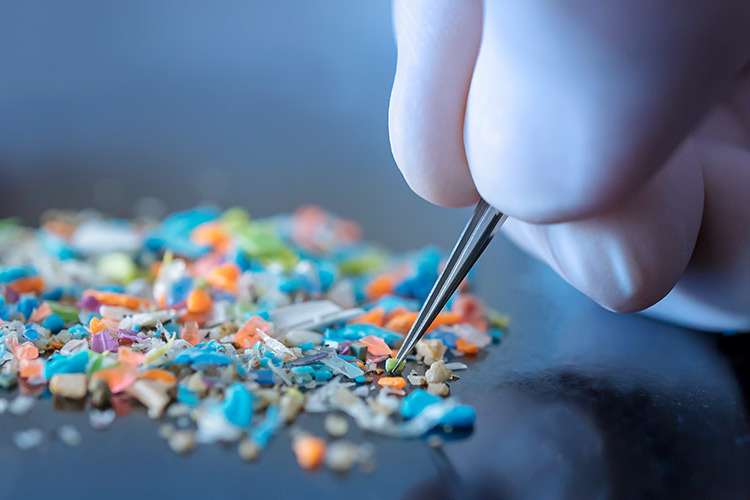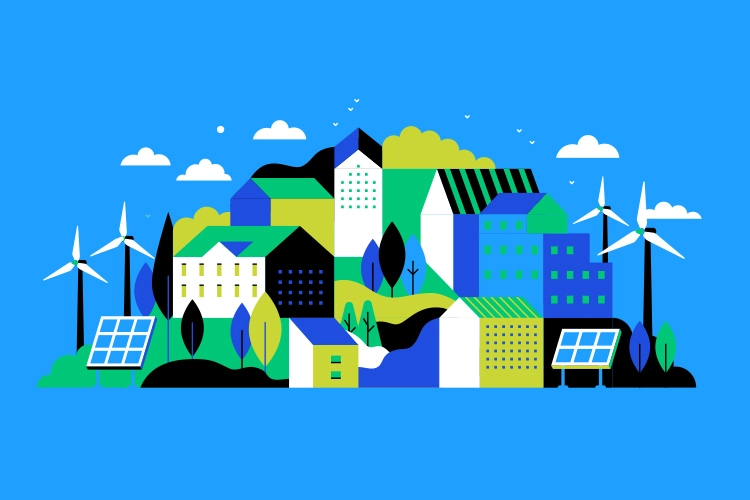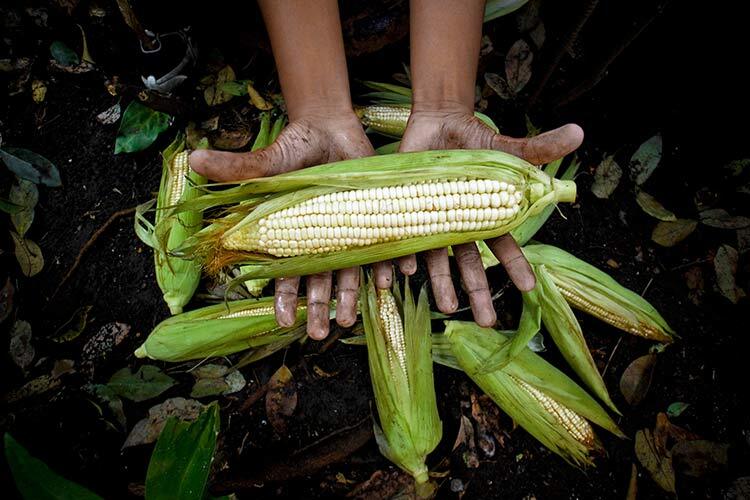If bioplastics do not fully degrade, they can break down into microbioplastics, posing an environmental risk and potentially causing damage similar to conventional plastics.
Researchers investigating how bioplastics fragment into tiny particles less than five millimeters in size, in some cases nearly invisible, much smaller than the thickness of a hair, when incompletely degraded, found this.
“There is no scientific evidence to confirm that microplastics from biodegradable plastics are any less harmful than conventional microplastics,” says Martín Esteban González, a researcher at the Sustainability and Climate Change Laboratory at Tec de Monterrey.
Although their market presence is less than 1% compared to conventional plastics, bioplastics are gradually gaining traction due to their renewable origins and faster biodegradation capabilities. If not adequately addressed, the issue of microbioplastics could become an additional environmental challenge.
What Are Bioplastics and How Can They Be Classified?
Bioplastics were introduced as an alternative to conventional plastics, synthetic materials made from non-renewable resources like petroleum, which take over 100 years to decompose. However, the prefix “bio” can be misleading, suggesting that all bioplastics are bio-based and biodegradable, which is not the case, notes González.
Bio-based refers to materials derived from organic carbon sources or plant biomass, such as corn or sugarcane. Biodegradable—or compostable—bioplastics can decompose entirely in nature through the action or metabolism of microorganisms, bacteria, fungi, and yeasts.
“Bioplastics fall into four distinct categories, each with its characteristics, despite some commonalities,” explains the researcher.
The classifications of bioplastics are:
- Bio-based and Biodegradable: These bioplastics are made from renewable sources and can break down completely in nature. Examples include Polylactic Acid (PLA), cellulose, and Starch (TPS).
- Derived from Non-Renewable Sources but Biodegradable: These bioplastics come from petrochemical sources but have structures that allow them to decompose. Examples include Polycaprolactone (PCL) and Polybutylene Succinate (PBS).
- Bio-based but Not Biodegradable: These come from renewable sources but do not decompose due to their molecular properties. Examples include Green Polystyrene (Bio-PE) and Bio-polyethylene Terephthalate (Bio-PET).
- Neither Bio-based nor Biodegradable: These are conventional plastics dominating the market, such as Polyethylene (PE), Polypropylene (PP), or Polyvinyl Chloride (PVC).
Bioplastics that lack biodegradability, like Green Polystyrene, can be 100% recyclable. However, their environmental impact depends on the efficiency of collection and processing systems for reuse.
Incomplete Degradation as a Cause of Microbioplastics
Improper disposal of conventional plastics results in microplastics, which are formed through physical processes such as abrasion, wear, or hydrolysis by saline water when they end up in the ocean. In contrast, microplastics from biodegradable plastics can also arise from incomplete biodegradation processes.
“Biodegradable plastics aim to address the broader issue of plastic pollution. They are designed to decompose naturally under specific conditions, primarily through composting and, to a lesser extent, anaerobic digestion,” explains González.
In industrial composting, bioplastics break down into materials like compost, CO2, and water due to the action of microorganisms in controlled conditions of moisture, ventilation, and temperature over a time frame similar to that of other organic waste. Anaerobic digestion, which also occurs in a controlled environment but without oxygen, produces gases such as CO2 and methane, as well as raw materials like digestate (used as a fertilizer).
Research groups have observed varied results in these processes when degrading different types of bioplastics, even under controlled laboratory conditions. For instance, with Polylactic Acid (PLA), some studies reported 90 to 100% degradation through composting within at least 90 days, while others achieved only 60%.
These percentages decline under real-world conditions, such as in industrial composting facilities where tons of biodegradable plastics are processed daily but often remain incomplete due to inadequate conditions for mineralization or insufficient time for decomposition.
“The problem with incomplete mineralization is the micro-fragments in the compost. When these are applied to soil for growing crops like corn or carrots, they no longer degrade under the same conditions and become persistent microbioplastics,” González notes.
In landfills or open dumps, where biodegradable plastics make up less than 1% of the waste stream, anaerobic degradation is expected due to the buried nature of the waste and lack of light. Researchers have observed that PLA biodegrades less than 15% in 100 days and around 95% in a year. In aquatic ecosystems, PLA degrades between 2 and 29% in marine environments and only 2% in freshwater.
Microbioplastics and the Risk of Ecotoxicity
When a component or contaminant spreads through rivers, soils, and other ecosystems and poses a danger or impact on living organisms regarding their physiological functions, it is referred to as ecotoxicity, explains González.
“Regarding research on conventional microplastics, various ecotoxicity levels have been observed. To date, no strong evidence indicates high levels of harm to humans. We might ingest them and have them in our blood or stomach, but they presumably haven’t been shown to cause significant health effects yet.”
However, for wildlife —such as terrestrial animals, fish, or birds— scientific evidence and studies have demonstrated clear adverse effects.
Regarding microbioplastics, the results remain uncertain. Researchers have not found conclusive evidence that they cause lesser damage to ecosystems.
González notes that there may be misconceptions regarding the naturalness of bio-based plastics due to their origin, leading some to believe they are inherently less harmful. Similarly, there is a misunderstanding about biocompatibility, which suggests that organisms will be compatible and assimilable with these materials—a claim that has yet to be substantiated.
Sebastián Gradilla, head of the Sustainability and Climate Change Laboratory at Tec de Monterrey, argues that to mitigate the environmental risks posed by bioplastics, it is crucial to advocate for public policies that ensure proper handling and processing of these materials.
Furthermore, there is a need to advance research to improve biodegradation processes, focusing on metabolic engineering and organismal adaptation and enhancing recycling schemes.
“There is a challenge in ensuring that as the market for viable plastics grows, these materials end up in the right place —composting facilities, anaerobic digestion plants, or recycling centers— to minimize the problem,” Gradilla adds.
Were you interested in this story? Do you want to publish it? Contact our content editor to learn more about marianaleonm@tec.mx


















